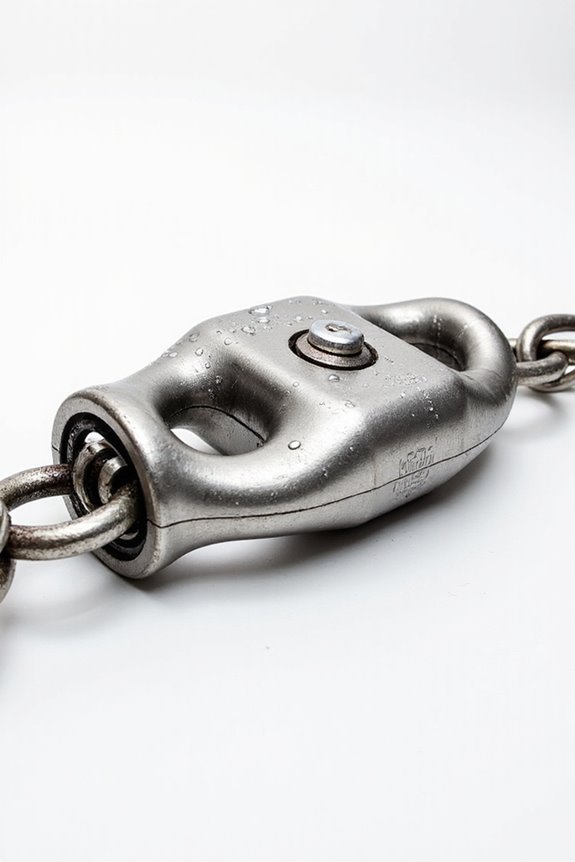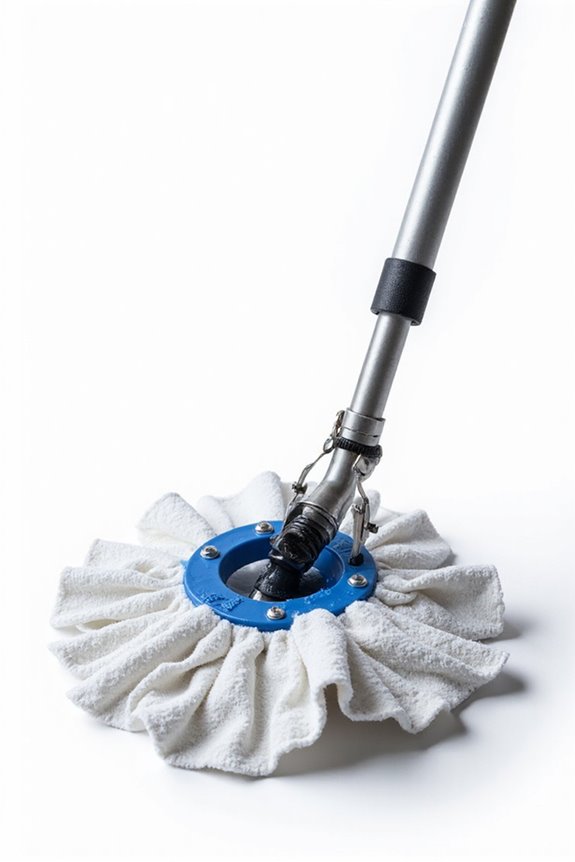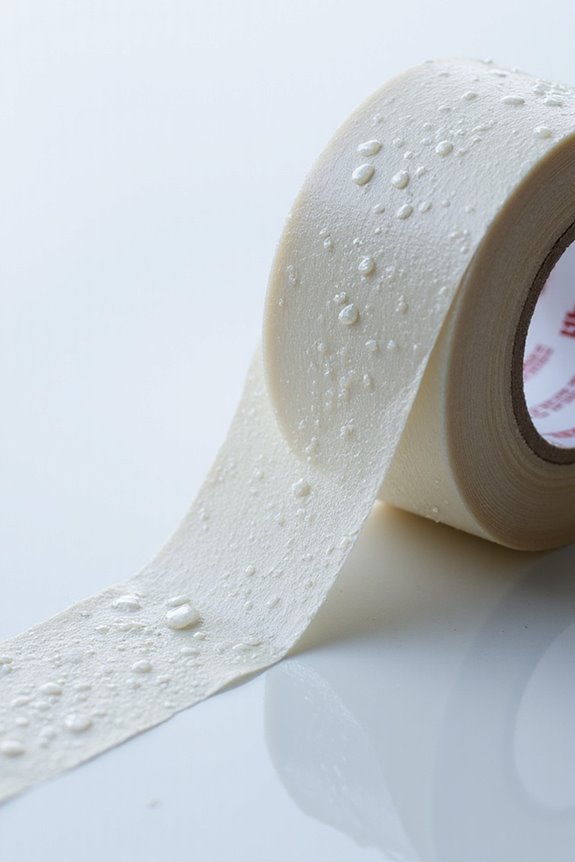Boat hooks are our extendable arms when docking or mooring, designed with sturdy materials like stainless steel and often telescopic for extra reach. Imagine snagging a line just out of reach or nudging a boat gently away from a dock—these tools make it easy and safe. They’re also lifesavers during emergency rescues, helping bring someone back aboard. Curious about the different styles and how to pick the perfect one? Stick around, and we’ll steer you right.
Key Takeaways
- Boat hooks are long-handled tools with hooks used for grabbing lines, securing the boat, and preventing damage during docking.
- They extend reach, allowing safe handling of ropes and pushing or pulling boats without awkward maneuvers.
- Boat hooks assist in emergency rescues by helping retrieve individuals overboard and marking their location.
- Made from durable, corrosion-resistant materials like stainless steel or aluminum, some feature telescopic handles for adjustable length.
- Regular use improves safety and maneuverability in marinas by protecting hands and boats from scratches and bumps.
What Is a Boat Hook and How Is It Constructed
When you think about docking a boat, you might not realize how handy a boat hook can be—but it’s really one of those simple tools that makes life a lot easier on the water. So, what exactly is a boat hook? It’s a long-handled device with a hook on the end, carefully crafted with hook construction principles that complement boat design. These hooks are usually made from tough materials like stainless steel or aluminum, ensuring strength and corrosion resistance. The handle could be fiberglass, wood, or metal—each offering a good grip and durability. Some hooks even adjust or telescope, giving us flexibility during docking. It’s pretty clever how such a straightforward tool’s design matches the challenges of maneuvering boats, don’t you think?
Primary Functions During Docking and Mooring
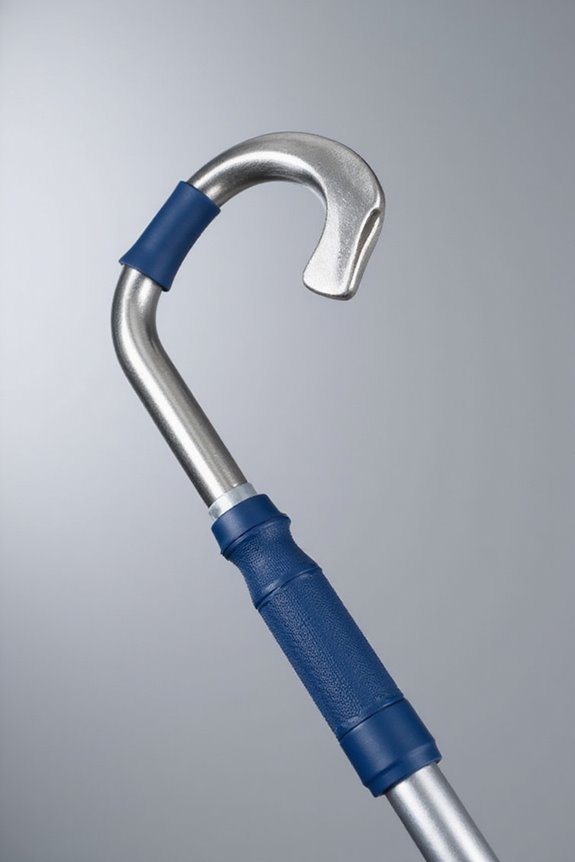
Now that we’ve got a handle on what a boat hook is and how it’s built, let’s talk about what it actually does when we’re out there docking or mooring. Ever notice how docking techniques rely heavily on timing and precision? That’s where our trusty boat hook shines. It helps us extend a hand—well, a hook—toward cleats or rings to secure lines quickly and adjust the boat’s position without juggling too many ropes. When mooring, it’s our go-to tool for grabbing buoys and managing lines, boosting overall mooring efficiency. Plus, it gently wards off the dock, preventing those awkward bump moments we all dread. So, think of your boat hook as both a helper and a peacekeeper during docking and mooring—it’s the unsung hero of smooth arrivals.
Techniques for Retrieval and Emergency Rescue
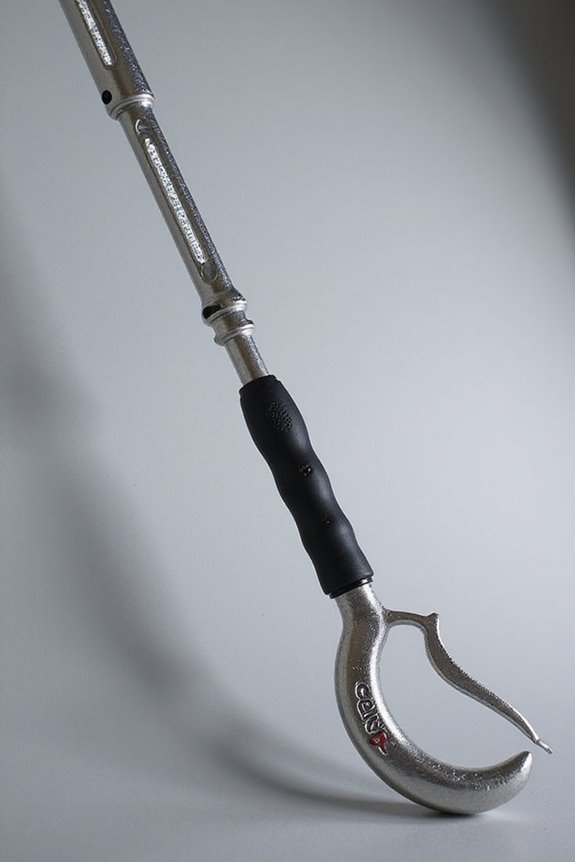
Although no one wants to think about emergencies, knowing how to effectively retrieve someone who’s fallen overboard can make all the difference. Rescue techniques like marking the person’s location with GPS or physical markers help us stay on track, while approaching downwind guarantees better control. Ever tried keeping calm when a friend’s bobbing in the waves? That’s where boat hooks shine—they’re perfect for reaching out and guiding someone to a ladder or rescue sling. Emergency preparedness means practicing crew roles, running drills, and making sure safety gear like life rings and ladders are ready to go. So, while we hope to avoid these moments, being proactive with rescue techniques isn’t just smart—it’s what keeps our boating community safe and ready for anything.
Enhancing Navigation and Ensuring Safety
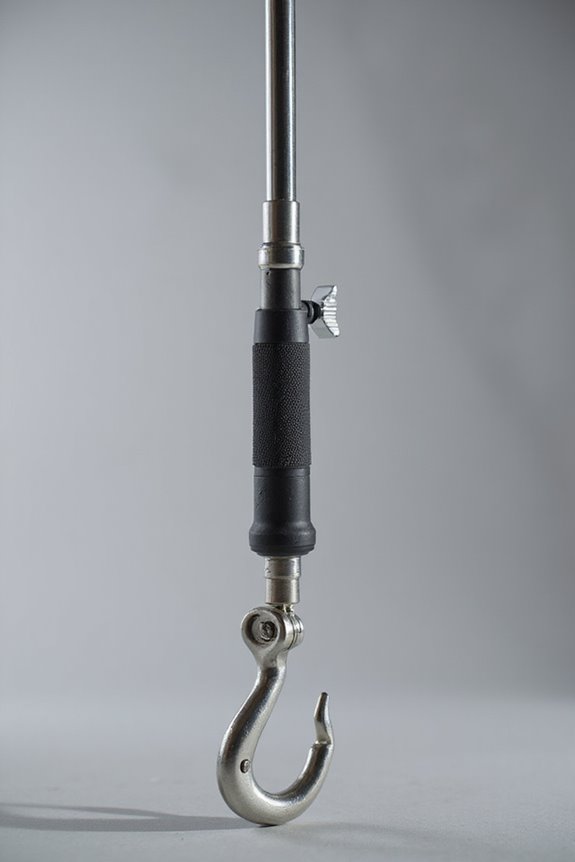
Since steering a boat through busy marinas or tight spots can sometimes feel like threading a needle, having the right tools makes all the difference—and that’s where boat hooks really earn their keep. Using proper navigation techniques with a boat hook gives us improved maneuverability, helping us nudge clear of docks and other vessels without stepping off. Plus, when mooring, they’re indispensable for handling lines from a safe distance—keeping fingers and toes safe, too! Following safety protocols means regular inspection and teamwork, ensuring everyone stays aware and stable during those tricky moves. Think of the boat hook as an extra arm, extending our reach and control. Additionally, ensuring that all accessories, including boat hooks and anchors, are compatible with your vessel enhances overall safety and performance. So, next time you’re wondering how to steer through a crowded marina, remember, a sturdy boat hook might just save the day—and your boat’s paint job.
Varieties and Designs of Boat Hooks
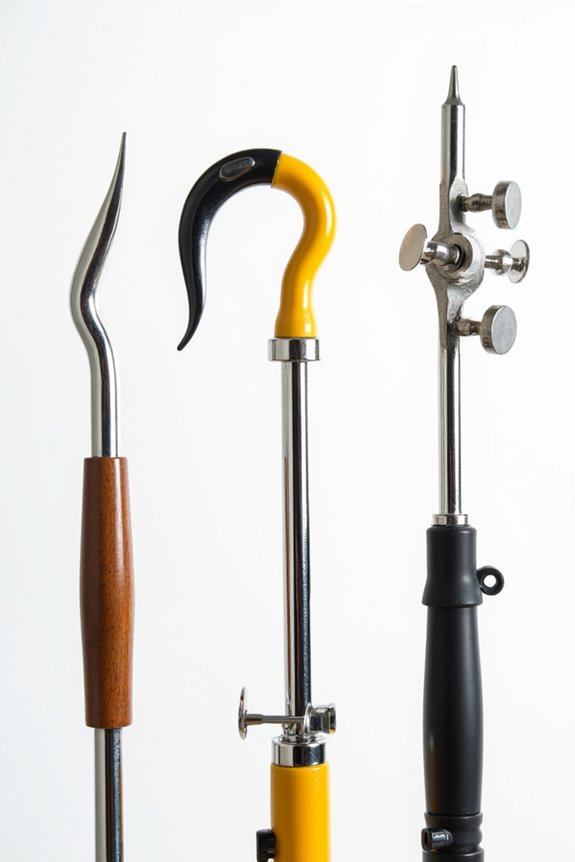
Boat hooks come in more shapes and styles than you might expect, each designed to make our time on the water a little easier and a lot safer. Some of us prefer the simplicity of one piece designs—sturdy, typically made from aluminum tubing, and ready for quick action with their non-slip grips. Others appreciate telescopic features that let the hook extend from 4 to 12 feet, offering extra reach when docking or fending off. Ever wondered if a boat hook could be both compact and tough? Rollable and paddleboat hooks fit the bill perfectly. Whether you lean toward traditional wooden shafts with brass hooks or modern, floatable composites, there’s a design that fits everyone’s style and our shared need for safe boating. After all, isn’t having the right tool part of being part of the crew?
Material Choices and Their Advantages
After checking out the different shapes and styles boat hooks come in, it’s only fair we talk about what they’re made of—because material choice isn’t just a boring detail; it shapes how well the hook performs on the water. When we consider material advantages, corrosion resistance tops the list since saltwater can be brutal. Stainless steel shines here—pun intended—with excellent resistance and strength, though it’s pricier. Aluminum, lighter and budget-friendly, still holds its own with decent corrosion resistance and easier handling. Both materials offer durability, but choosing between them depends on what you want: the flashy, low-maintenance stainless or the lightweight, versatile aluminum. Either way, picking the right material means less worry and more time enjoying the water with friends, right?
Additional Practical Applications
Though we often picture boat hooks just helping us dock or fend off the pier, they actually pull double duty in plenty of practical ways onboard. Ever lost your fishing gear overboard? No worries—a good boat hook can retrieve it, saving you from that annoying “oops” moment and a pricey trip to the tackle shop. And when debris starts drifting too close for comfort, these hooks come in handy for debris clearing, keeping our path safe and smooth. Plus, they’re perfect for gentle retrievals, so you don’t damage what you’re snagging, whether it’s gear or something unexpected. So, next time you’re out there, think of your boat hook as more than just a docking tool—it’s your versatile sidekick for all sorts of situations. Who knew?
Tips for Choosing the Right Boat Hook
Wondering what really makes a great boat hook stand out? Let’s talk length considerations first. Depending on your boating style, you might prefer a telescoping hook that extends up to 10 feet for those tricky dock reaches, or maybe a fixed-length pole for extra strength during heavy tasks. Now, hook styles are just as important—classic hooks work fine, but crabbers or locking mooring hooks can make life easier by securing lines without slipping. Don’t forget non-marring tips to keep your boat scratch-free, because nobody wants their new gear looking battle-worn on day one. Together, we can pick a boat hook that feels just right in your hand and fits your needs perfectly—because every good crew deserves the right tools on deck, right?
Frequently Asked Questions
How Often Should a Boat Hook Be Inspected for Wear and Damage?
We should prioritize inspection frequency based on wear indicators and usage conditions, checking boat hooks regularly—ideally annually or more often—to keep everyone safe. Let’s stay vigilant and support each other in maintaining gear properly.
Can Boat Hooks Be Used Effectively in Icy or Freezing Water Conditions?
When steering through freezing conditions, we understand boat hooks can help with ice retrieval but aren’t a silver bullet. They’re best for thin ice and small chunks, so let’s stick together and choose tools wisely for safety’s sake.
Are There Specific Storage Recommendations to Prevent Damage on Smaller Boats?
It is understood on smaller boats, smart hook storage is key to boat safety. Let’s use soft covers, secure attachments, and customized holders to protect our hooks, keeping them accessible and preventing damage while fostering a shared commitment to care.
What Maintenance Practices Extend the Lifespan of Aluminum Boat Hooks?
To tackle tarnish and thwart time, we trust thorough cleaning techniques and corrosion prevention practices. Together, we can care for our aluminum boat hooks, creating a community of committed caretakers who keep gear gleaming and lasting longer.
Can Boat Hooks Be Customized With Personal or Safety Enhancements?
We understand custom designs let us tailor boat hooks with essential safety features like non-slip grips, breakaway mechanisms, and reflective wraps. Together, these enhancements boost our confidence and keep us safe on every outing.


